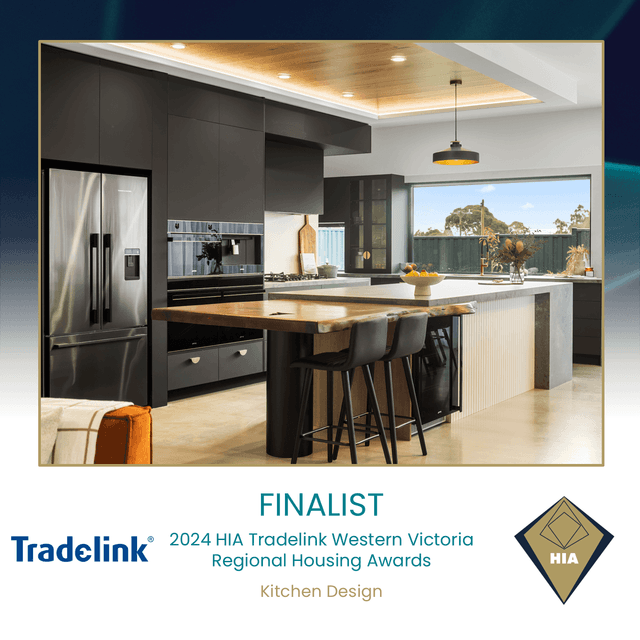Thinking about dual occupancy? Learn how Victoria’s new permit rules could help you turn one good block into an even better investment.
If you have a big backyard, an ageing home on a generous block, or an investment site in Melbourne’s middle-ring suburbs, you’ve probably wondered if dual occupancy is worth the effort. Up until now, the answer has often been “yes… but get ready for a long planning slog.”
That has started to change.
The Victorian Government is rolling out major planning reforms to speed up approvals for simpler housing projects, including dual occupancies and two–lot subdivisions. A new fast-track pathway has already been introduced through VicSmart, and broader changes to the Planning and Environment Act are before Parliament, with the goal of cutting approval times and reducing red tape for small-scale infill projects across suburban blocks.
For homeowners and small developers, it could be a very good moment to move from “thinking about it” to actually exploring a project.
Elements has been working in this space for years, and these reforms line up perfectly with what the team already does well: smart site-responsive design, clear feasibility work, and guiding clients through complex permits without the headache.
Let’s unpack what is changing and what it could mean for your block.
First things first: what actually counts as dual occupancy?
“Dual occupancy” in Victoria is usually talking about two dwellings on one lot. That might be:
- Keeping the existing house and adding a new dwelling in the backyard
- Demolishing one home and rebuilding two
- Building two new homes on a freshly created site, then subdividing into two titles
This is different from the recent “small second home” changes that allow granny flats and secondary dwellings up to 60 m² without a planning permit in most zones. Those smaller homes still need a building permit and must meet siting and amenity rules, but they cannot be separately titled or sold off.
Dual occupancy, on the other hand, is about full-size homes and separate titles. Done well, it can:
- Create a new income stream
- Help you downsize on your own block
- Give adult kids or extended family a real home, not just a bungalow out the back
- Add serious value to land that is underused right now
So where do the new rules come in?
The big shift: faster approvals for two homes on a lot
The headline change is the way dual occupancies and two–lot subdivisions will be assessed in many residential areas across Victoria.
Through planning scheme amendment VC288 and related reforms, most two–lot subdivisions and dual-occupancy projects in key residential zones can now use the VicSmart fast-track pathway, which has been in place since 16 October 2025. That means:
- A statutory 10–day decision time frame for eligible applications
- No public notification
- No third-party appeal rights in many cases
- A tighter assessment based on a specific checklist of design standards
The reforms apply across several common zones, including General Residential, Neighbourhood Residential and Residential Growth zones. If your site sits in one of these and meets the criteria, your application can be processed much faster than under the traditional permit system.
Having said that, your design still must meet key ResCode standards such as height limits, setbacks, garden area, overlooking and overshadowing controls. Councils must check those boxes. But the process is more streamlined, and the scope for drawn-out debate is reduced.
For many sites that have “always been suitable” for dual occupancy, the main barrier has been time, cost and uncertainty. These reforms go right to that pain point!
The broader planning shake-up: 10, 30 and 60-day streams
Alongside the VicSmart changes, the Planning Amendment (Better Decisions Made Faster) Bill 2025 proposes three new planning approval streams across the state:
- Around 10 days for simpler projects like stand-alone homes and duplexes
- Around 30 days for townhouses and low-rise developments
- Around 60 days for larger and more complex projects
The Bill also narrows who can object and appeal, focusing on people directly affected, rather than anyone who happens to hear about the project.
For dual occupancy builders and their clients, this matters because:
- Approval timelines become more predictable
- Holding costs can be reduced
- There is less risk of a single objection dragging a project out for months
You know what? That alone can be the difference between a project stacking up and being put in the “too hard” basket.
Why dual occupancy is starting to look very attractive
With these reforms in play, dual occupancy in Victoria is shifting from “specialist niche” to a more accessible strategy for typical homeowners and small investors.
A few reasons it is worth a closer look now:
- Planning is catching up to reality
Across Melbourne you can already see townhouses, duplexes and granny flats popping up in established streets. The new Townhouse and Low-Rise Code, along with the faster dual occupancy pathway, is really about catching planning up to what is already happening on the ground and giving everyone a clearer, more consistent set of rules to work with. - Rental demand is strong
Extra dwellings in established, well-serviced areas are in high demand. A second home on your block can provide rental income or a flexible place for family, with the option to sell later. - Land is doing the heavy lifting
Construction costs remain higher than they were a few years ago, but when you are building two quality homes on one well-located site, the land value is working harder. That is often more efficient than buying a second standalone property. - You can stage your decisions
Some owners start with a feasibility study, then pursue permits before committing to a full build. With faster approvals, that front-end stage becomes more appealing, as you are not tying up years on a “maybe.”
Of course, every site is different. A sloping block in Gisborne, a corner site in Sunbury and a long narrow block in inner Melbourne all tell a different story. That is where a custom builder who understands planning really earns their keep.
How Elements helps you navigate the new rules
Planning reforms are helpful only if someone translates them into a clear path for your site.
At Elements, the process usually starts with a conversation and a careful look at three things:
- Site potential
Zoning, overlays, access, orientation and surrounding character are checked up front. The team looks at whether your block is likely to qualify for the VicSmart pathway or whether a conventional planning permit is still the right route. - Project feasibility
This is the part that often gets skipped. Elements works with you to model different scenarios:
- Keep the existing home and add one out the back, or start fresh with two new homes?
- Live in one and rent the other, or sell both?
- How do design choices affect build cost, resale value and rental income?
It is not just about squeezing in two floorplans. It is about whether the numbers and lifestyle outcomes make sense for you. - Tailored design and documentation
Dual occupancy design is a bit like Tetris. You are balancing driveway access, car parking, private open space, overshadowing rules and neighbourhood character against what you actually want in a home. Elements specialises in custom designs that work with the fall of the land and local context, not against it.
Once a concept is agreed, Elements coordinates the documentation, consultants and permit application so you are not juggling surveyors, energy raters and engineers on your own.
Through all of this, the team keeps one eye on the evolving code and reform details, so your project is built around the rules that will apply when you are ready to lodge.
A quick reality check: it is easier, not effortless
It is worth saying out loud: faster dual occupancy approvals do not remove all complexity.
- Heritage or environmental overlays can still add steps
- Design standards must still be met, even under VicSmart
- Not every block will be suitable for two full-size homes
There will always be some “devil in the detail,” as planning consultants like to say.
The difference now is that if your site is suitable and your design is well considered, you are less likely to be stuck in limbo.
Thinking about a dual occupancy project? Here is what to do next
If you are in Melbourne or regional Victoria and you are curious about what these reforms might mean for your place, a good next step is simple:
- Get a site-specific opinion, not a generic one
- Run a clear feasibility study with real build costs and realistic returns
- Talk through lifestyle and investment goals so the design suits you, not just the market
That is exactly the space Elements works in every day.
If you are sitting on a block that feels “too big for just one home,” or you have been waiting for planning rules to catch up before acting, now is the time to start the conversation.
You do not have to know the difference between VC288, VicSmart and the new planning streams. You just need a builder and design team that does.
Setting Standards. Earning Recognition. Elevating Lives.
Our clients don’t settle for ordinary - they seek the exceptional. They come to Elements with bold ideas and big ambitions, ready to create a home that reflects their success.
With award-winning projects recognised for innovation and craftsmanship, we deliver homes that are as refined as they are personal. Every detail is tailored. Every moment, considered.
Because for our clients, this isn’t just a home - it’s a statement. And we’re here to make it unforgettable.





Let’s make something beautiful - together.
Our clients come to us for more than a beautiful home - they come for a tailored experience. One that is refined, timeless, and deeply personal. We craft spaces that reflect who they are and the life they aspire to live - effortless, elegant, and entirely their own.

Get your complete guide to building with Elements
Download ExploreCollections
ExploreCollections